Imaging: Owl, Moon, Comet 45P, Venus;
Bright Bolide
Posted: 7 January 2017
The new year began on Sunday, 1 January 2017, with overcast skies and some light rain (0.27") throughout most of the day. On Monday, 2 January, 0249-0545 MST, our local electric company (managed by the United States Government) had a power outage with the temperature at 35°F. Cloudy skies continued until Wednesday, 4 January, when the sky was partly cloudy, giving me hope of being able to open the observatory that night. Unfortunately, as sunset approached the sky became mostly cloudy. Cloudy skies continued on Thursday, 5 January. That evening I attended a meeting of the Oracle Dark Skies Committee. Friday, 6 January, dawned overcast but with a forecast for a clear night.
|
Open: Friday, 6 January 2017, 1810 MST Temperature: 63°F |
Session: 1057 Conditions: Mostly clear |
Equipment Used:
12" f/8 LX600 w/StarLock
Wired AutoStar II handset
2" 24mm UWA eyepiece
2" 9mm 100° eyepiece
2" 2X PowerMate
Focal Reducer
Camera:
D7200 DSLR
As I walked out to the observatory I saw a great horned owl on the roof of the house:
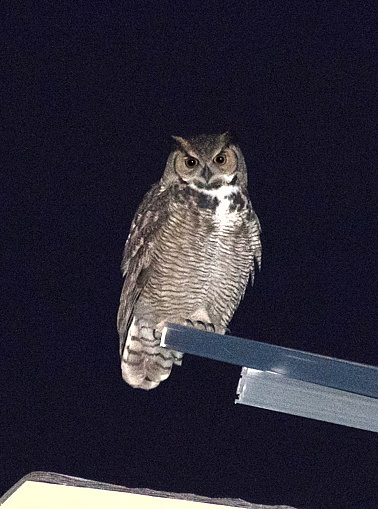
1816 MST: LX600 ON, StarLock OFF, High Precision OFF.
1817 MST: viewed Venus, then the Moon, 102X.
Mounted the D7200 DSLR at prime focus + focal reducer to image Comet 45P/Honda-Mrkos-Pajdusakova, very low in the southwestern sky. I focused the 12" telescope using the Moon, and while I was on the Moon I took this 1/640sec, ISO 400, image:
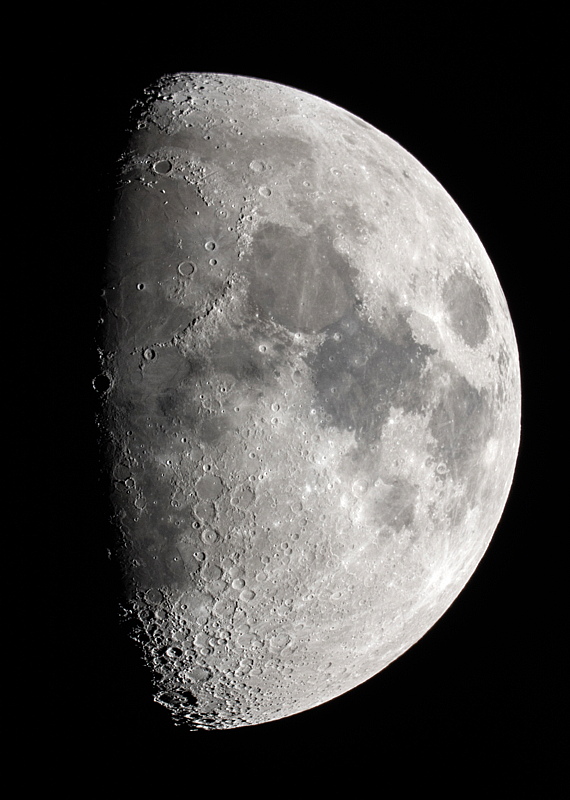
1833 MST: locked the focus. Slewed to the star Altair and SYNCed the AutoStar. Checked the focus using the mask and made a slight correction. Wi-Fi ON. Used SkySafari 5 Pro on my iPhone 6s Plus to GOTO the comet. Comet 45P head was faintly visible in the camera viewfinder. 1843 MST: StarLock ON for autoguiding on a star. Took this 1 minute, ISO 2500, White Balance 4000K, image (cropped) of Comet 45P/Honda-Mrkos-Pajdusakova and its faint thin tail:
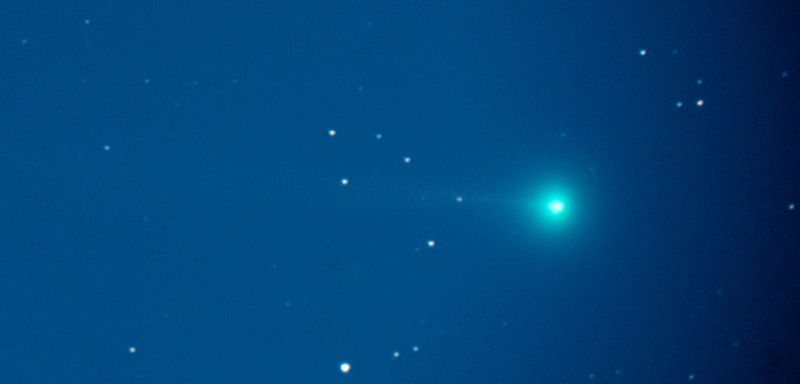
1847 MST: StarLock OFF, Wi-Fi OFF. Removed the focal reducer and added the 2X PowerMate for prime focus imaging of the planet Venus. Slewed to Venus, focused, and turned StarLock ON. This is a stack of 1839 HD video frames, 1.3X crop factor, 1/500sec, ISO 320, using Keith's Image Stacker:
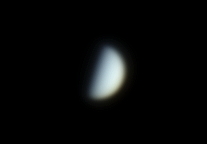
1902 MST: StarLock OFF. Slewed to the Moon. Added the star diagonal for convenience in viewing the Moon in the camera viewfinder since the Moon was near the Zenith. Took these images, 1/250sec, ISO 1600, White Balance Auto:
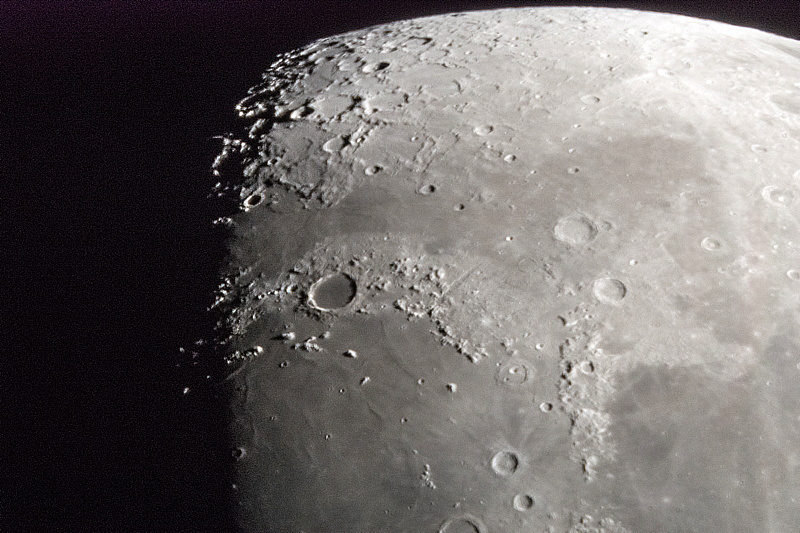
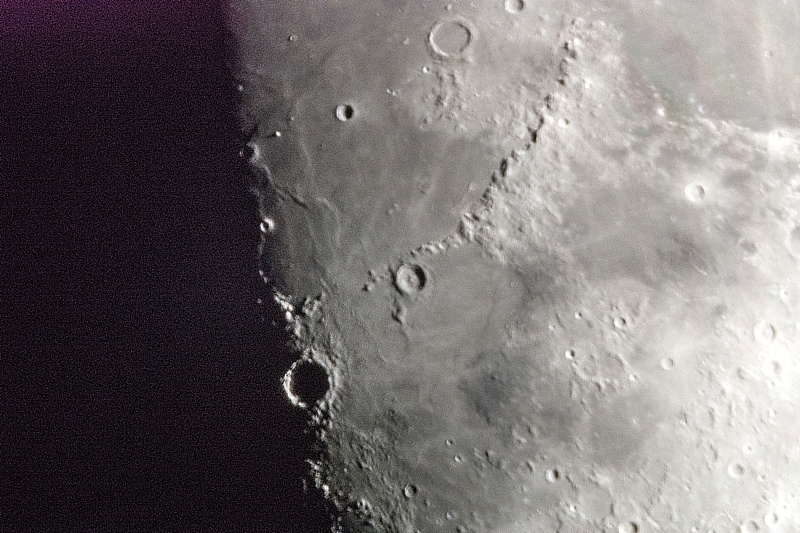
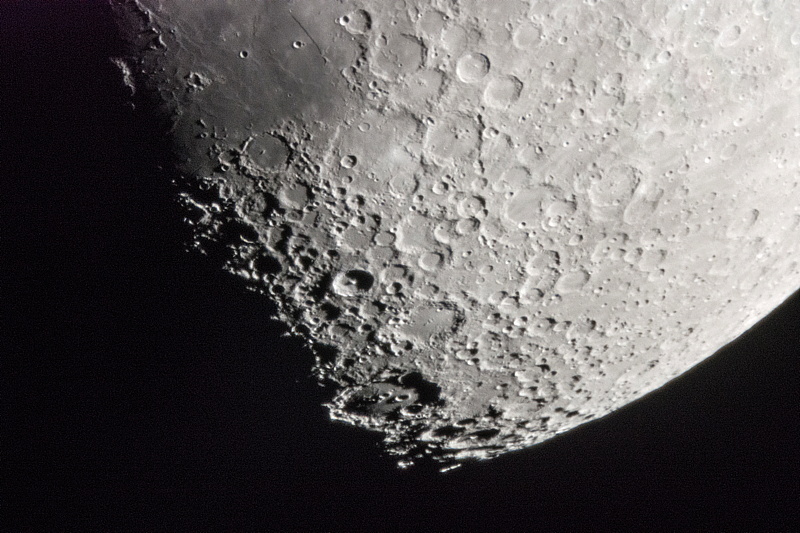
1915 MST: ended imaging. Removed the camera and PowerMate. Did some lunar observing, 271X.
1926 MST: slewed to the star Aldebaran and SYNCed the AutoStar. Slewed to the eclipsing variable star RW Tauri and viewed it, 271X. I hope to observe the next eclipse on Saturday evening, 7 January, but the forecast is for a cloudy sky.
1932 MST: viewed M42 (Great Nebula in Orion), 271X. Some nebulosity was visible but the bright moonlight interfered. The view of the stars in the Trapezium was good though. Then switched to 102X and viewed M42. Pretty view (as always).
1956 MST: last look at M42, 102X. LX600 OFF.
2009 MST: as I stepped outside of the observatory to close up for the night I saw a bright bolide (flaming meteor) near the Zenith. It was moving fast south-to-north and passed from near Orion to near Auriga. It was impressive.
|
Close: Friday, 6 January 2017, 2010 MST Temperature: 47°F |
Session Length: 2h 00m Conditions: Mostly clear |
Comments are welcome using Email. Twitter users can use the button below to tweet this report to your followers. Thanks.
Cassiopeia Observatory Home Page
Copyright ©2017 Michael L. Weasner / mweasner@me.com
URL = http://www.weasner.com/co/Reports/2017/01/07/index.html
